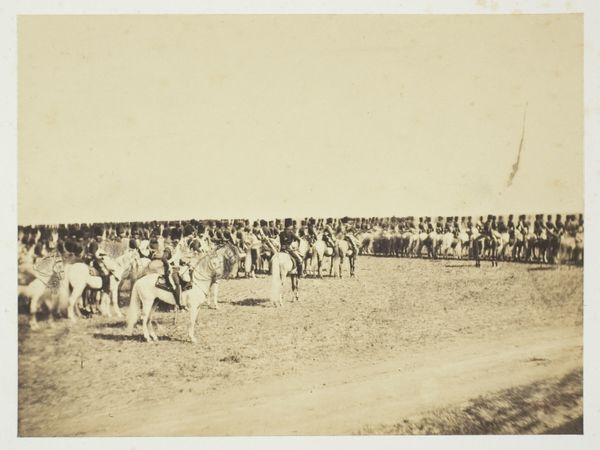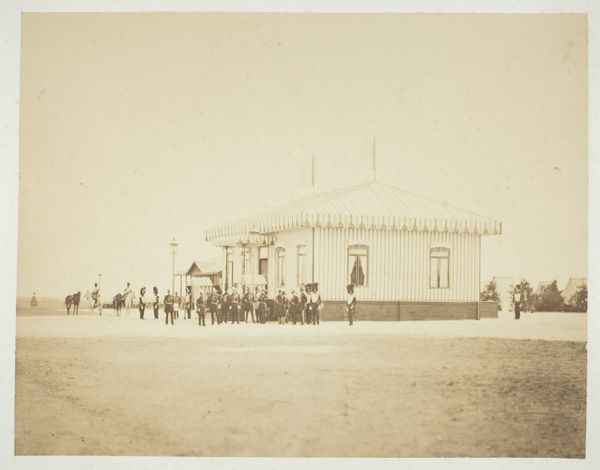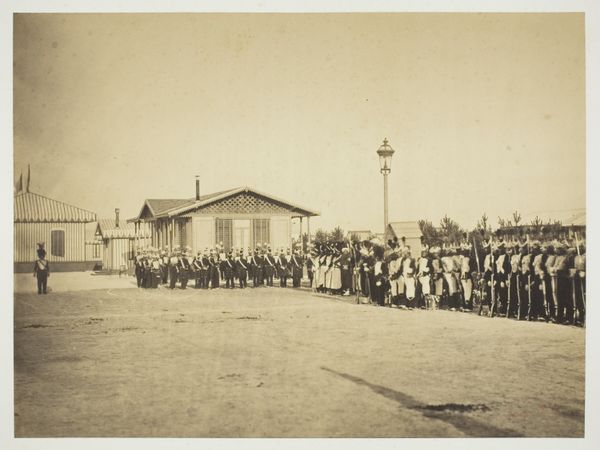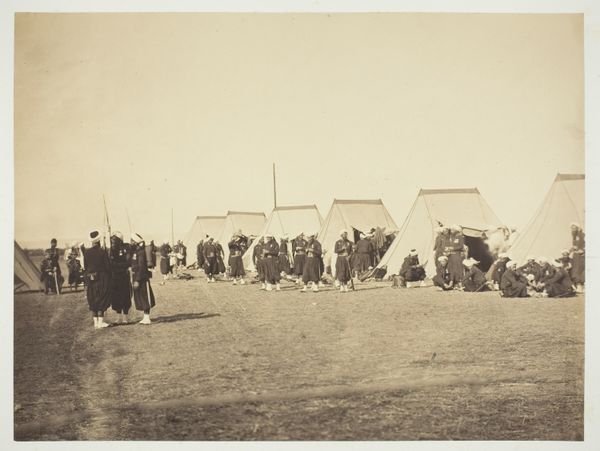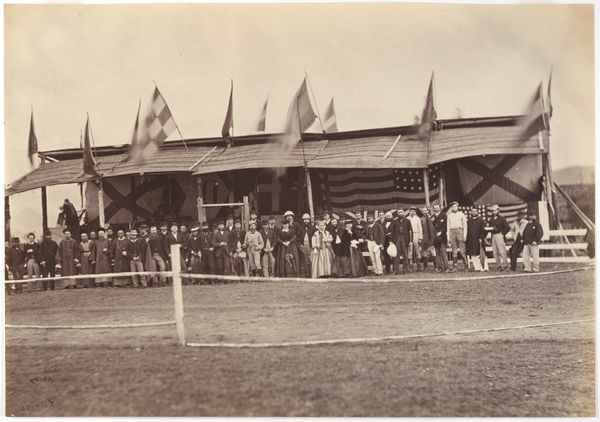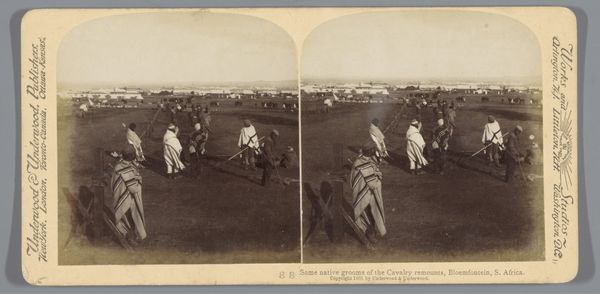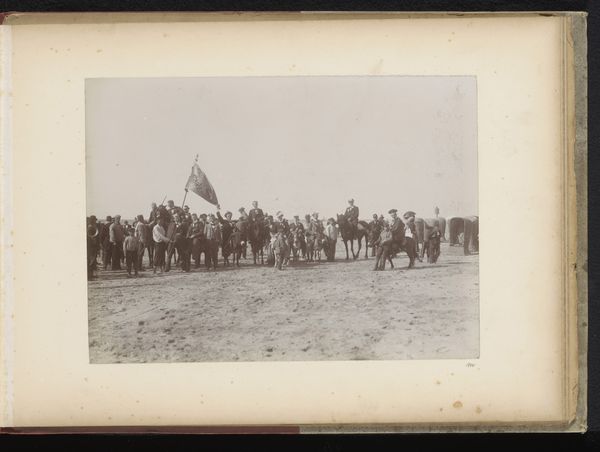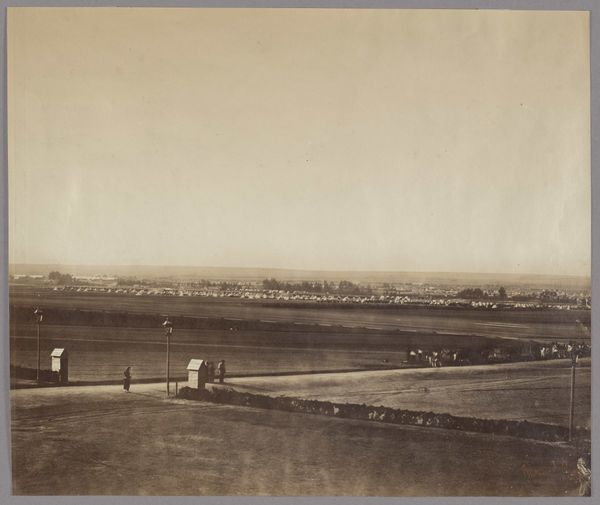
Dimensions: 28.6 x 35.8 cm (11 1/4 x 14 1/8 in.)
Copyright: Public Domain
Curator: Here we have Gustave Le Gray’s “La Messe au Camp de Châlons,” an albumen print dating to 1857. Editor: The most immediate impression is of a rather stark contrast between the regimented lines of soldiers and the softness of the sky. There's a real tension there, almost melancholic. Curator: Indeed. Consider that albumen prints involved coating paper with egg white before the photographic emulsion. It speaks volumes about the processes that enabled the relatively sharp detail we see across such a wide vista here. Note also the social context: military might intertwined with religious ceremony under the Second Empire. It begs questions about power, belief, and control during this period. Editor: I see what you mean. The composition does underscore that. The strong horizontals of the field and distant soldiers focus the eye on the architectural geometry of the altar. The soft gradations and limited tonal range add to that somewhat muted feeling I had initially. Curator: But those gradations belie the practical effort required to achieve them! Combining separate negatives for the sky and the ground to overcome the limitations of early photographic technology wasn't simple. The seams are barely visible. Labor is so important to acknowledge here, not only in the creation of the image but of its subjects as well. Editor: Granted, the technical achievement is undeniable. But that merging creates an idealized view, one that minimizes any harshness or visual disruption. The materiality serves the aesthetic. It brings a cohesive balance, a formal harmony that underscores the solemnity. Curator: A manufactured harmony that glosses over socio-economic tensions implicit in this staged military spectacle. Editor: Perhaps, but one could argue the aesthetic itself becomes a reflection of such ambitions! The work's form gives way to considering power structures as it stands. Curator: It’s fascinating how the formal choices themselves become inextricably linked to the industrial practices and societal expectations that informed their production. Editor: Ultimately, this is more than just a document. It’s a carefully constructed visual statement where artistry meets history. The details of the aesthetic give nuance to the context in which the subject lives.
Comments
No comments
Be the first to comment and join the conversation on the ultimate creative platform.
